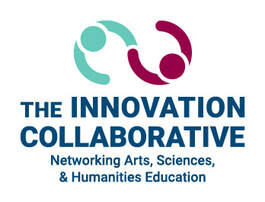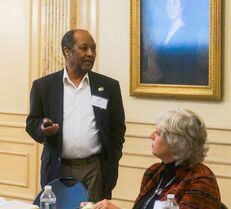 The Collaborative’s Research Thought Leaders help provide the strong research foundation for the Collaborative’s work. Each Thought Leader is nationally and internationally recognized in their own field and brings an extensive depth of experience and expertise. They also are adept at working across disciplines. In previous newsletters, we brought you interviews with each of our Thought Leaders. This new series, launched in the Winter 2021 newsletter, reflects on how you might apply some of their most important ideas to your work in STEAM education. To do this, we’re using Collaborative research findings and examples of successful applications of these ideas in teaching practices. The first article in this series examined creative and innovative thinking. The second article explored STEAM and interdisciplinary learning. This third article in the series looks at collaboration. A future series article will address STEAM models. The information below is based on Thought Leaders’ interviews and an in-person convening in Washington, D.C. in 2016, that was supported in part by the National Endowment for the Arts. Collaboration A hallmark of effective practices in STEAM education is collaboration, both among students and among teachers. Thought Leader Input:
** Transdisciplinary:
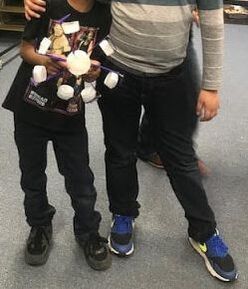
0 Comments
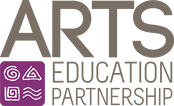 By Mary Dell’Erba, Collaborative Advisory Council member On July 13-14, 2021, the Arts Education Partnership (AEP) hosted a Policy Academy on STEAM Education. The event convened teams of five leaders from three states—South Carolina, Vermont, and West Virginia. Participants created action plans to advance STEAM education in their respective states. During the two-day event, state teams received information and coaching from AEP and Education Commission of the States, with which AEP is aligned. Participants also received coaching and information from STEAM leaders in Georgia, Ohio, and Nevada. The proposed state plans include items such as instructional resources; assessment considerations; defining STEAM education at the state level through policy statements; hosting a statewide summit to convene STEAM leaders and facilitate collaborations; and articulating pathways for STEAM school certification. AEP will continue to offer targeted technical assistance to these states, in collaboration with the Innovation Collaborative, for up to 18 months. This assistance will support implementation of the states’ plans in alignment with the goals of the Innovation Collaborative’s States’ Initiative. The technical aid may include: information requests, providing testimony or research on STEAM education, facilitating meetings, or conducting state visits, travel permitting. The Collaborative’s State’s Initiative, led by AEP’s Mary Dell’Erba, focuses on providing the Collaborative’s STEAM research findings to support STEAM education at the state level. Mary Dell’Erba is the Arts Education Partnership’s Senior Project Manager. For more information about the Policy Academy, please contact her at mdellerba@ecs.org.  The Collaborative’s first goal is conducting and sharing research on the many ways that STEAM (Sciences, Technology, Engineering, Arts/Humanities, and Math) promotes creative and innovative thinking for all demographics. Throughout the 7 years of this research in K-12, the Collaborative has focused on discovering the most effective practices in classroom implementation and teacher professional development. This work has been generously supported in part by funding from the National Endowment for the Arts. To share its research, the Collaborative publishes its findings in peer-reviewed journals, among other venues. The third Collaborative research article, “Effects of Transdisciplinary STEAM Lessons on Student Critical and Creative Thinking”, has just been published by The Journal of Education Research, a publication of Routledge, Taylor, and Francis, the leading publisher in academic education. The article is primarily authored by Bess Wilson, PhD, Collaborative K-12 Co-chair and Assistant Professor, Department of Foundations and Secondary Education, University of North Florida. Secondary article authors are Collaborative Executive Director Lucinda Presley, Collaborative Innovation Fellow Kimberly Olson, and Dr. Wilson’s graduate assistants HwanHee Song and Julie Johnson. The article shows how STEAM classroom lessons and experiences can strengthen student creative thinking, problem solving, collaboration, and persistence. In line with another Collaborative goal, applying research to practice, these findings, along with all other research findings, will be applied to the Collaborative’s upcoming STEAM teacher professional development and classroom implementation in the 2021-22 academic year. These findings will be integrated with the Collaborative’s Culturally Responsive Teaching strategies to meet the needs of all learners, especially those in underrepresented populations. You can find the article at: Effects of Transdisciplinary STEAM Lessons on Student Critical and Creative Thinking.  The Collaborative’s Visibility Committee has been researching strategies and content to help raise the public profile of the organization, motivate membership, and provide more value to member educators, administrators, and other invested stakeholders. Much of its proposed work focuses on website content and social media engagement. This includes:
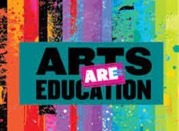 Arts education institutions and their members across the US are addressing Equity, Diversity, Inclusion, and Access (DEIA) in a variety of ways. View this Arts Are Education Talk It Up podcast to learn some of the ways this is being accomplished. The podcast is hosted by Jim Palmarini, Educational Theatre Association Policy and Advocacy Advisor and Director of the Arts ARE Education (ARE) campaign. ARE is sponsored by the National Coalition for Core Arts Education (NCCAS), a coalition of national arts and arts education organizations working to make standards-based arts education available for every student. This ARE podcast features Erika Hawthorne, Education Specialist for the Arts Education Partnership (AEP), a national network of organizations dedicated to promoting arts education. In this podcast, Ms. Hawthorne discusses AEP’s Equity Working Group and its current efforts. 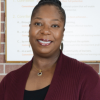 By Sharon Delesbore, PhD, Collaborative Board Member Sharon Delesbore, PhD, is a Collaborative Board member and President of the Association for Multicultural Science Education, an affiliate of National Science Teaching Association (NSTA). She also is Asst. Principal, LV Hightower High School, in Ft. Bend ISD, Missouri City, TX. This article is an adaptation of a blog she was invited to write for the STEM Teacher Leadership Network. This network is an NSTA affiliate that focuses on improving schools, policy, and the future of STEM education. As the Collaborative focuses on serving the needs of diverse populations, this article points out the importance of equity, diversity, and inclusion in science education. I must preface this piece with honesty. It was difficult for me to pull my thoughts together to write given the many incidents of injustice, white privilege and racism that remind us of the continued inequities in our society. In an effort to create an America of equality, we, as a nation, have worked hard not to offend “others”. When I say “others”, I mean the different groups of people who have felt neglected, negated, and punished for not fitting into the idealized image of being an “American” that is commonly communicated by our mainstream and social media. Truthfully, this country’s forefathers created a document framed in biased ideologies. Their definition of being “created equal” was limited to white men of financial means. It is 2021 and things have changed, with new, courageous voices speaking up, asserting that individuals and organizations must become self-reflective practitioners and conscientious reformers willing to meet the challenges of creating equity in all aspects of our society. The need for equity is most pressing in the education of our students, including in science education. Our work to create equity in science education will not come to fruition until educators recognize and realize that the work starts from within. Are we truly ready to look ourselves in the mirror and ask tough questions that go to the root of our beliefs about how we think about all people, whether black, white, Hispanic, Indian, male, female, rich, poor, disabled, or gifted? I am speaking particularly of and to anyone who feels that they have not been represented with dignity. I am speaking of and to anyone who believes that they do not have a seat at the table of decision-making. I invite you to pull up your own chair because your thoughts are valued and your input wanted. For any conversation to begin, I always like to start with an operational definition of words. There are many shared definitions of diversity, equity and inclusion; the ones I’m sharing here are but one example. Diversity refers to the demographic subgroups within educational institutions. The Next Generation Science Standards (NGSS), released in April 2013, identified student diversity through seven case studies noted in Appendix D – “All Standards, All Students: Making the Next Generation Science Standards Accessible to All Students". The four accountability groups defined in No Child Left Behind (NCLB) Act of 2001 and the reauthorized Elementary and Secondary Education Act [ESEA], Section 1111(b)(2)(C)(v) were;
Further, student diversity is extended by adding three groups:
Equity is the intentional consideration, formulation, and implementation of practices, policies, and procedures within an organization to deter systemic biases that can hinder the measurable outcome of programming as well as create barriers that can affect student achievement within demographic subgroups in comparison to institutional expectations and performance standards. Equity fosters accountability between stakeholders involved in the decision-making process and those designated to perform within the organization. A conscientious, equitable mindset can help begin the process of desegregating and reversing bias implications of practice. To create equity in science education will demand individual and corporate reflection that includes asking some tough, fundamental questions. One strategy that might help is the application of the A-List Approach©, which was developed by Dr. Delesbore to create equitable opportunities in science education for all students. It can address this dilemma by:
Creating equity in science education is a ginormous undertaking. As scientists, we thrive in data. The challenge is reminding decision-makers our students are the deliverable outcome of the curriculum we develop, time we invest, budgets we anticipate, and futures that we hold in the palm of our hands. Every decision we make determines the destiny of every child. We must take the blinders off, remove bias, prejudice, and racism from the equations that we formulate in our society to ensure that all students have the same opportunity to excel and contribute to our America, whether in science or whatever endeavor they pursue, given the educational opportunity they so richly and equally deserve. About the Author: Dr. Sharon Delesbore is the president of the Association for Multicultural Science Education (AMSE), an affiliate organization of the National Science Teaching Association. AMSE was organized to stimulate and promote science teaching to students of culturally diverse backgrounds and to motivate such students to consider science-related careers; to explore and promote the improvement of science curriculum, educational systems and teaching methods in school; to assist such stimulation; to recruit and involve teachers of all minorities in science education; and to initiate and engage in activities and programs to further improve the science education of culturally diverse students. 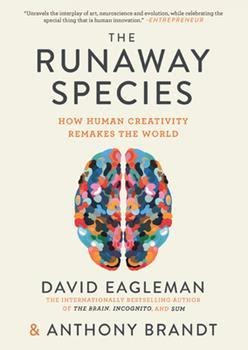 In case you missed it when published in 2017, The Runaway Species: How Human Creativity Remakes the World is well worth a weekend of deep thought. Authors David Eagleman (a neuroscientist) and Anthony Brandt (a musician) take a unique look at human history and innovation from their diverse but complementary perspectives. Eagleman is the Emmy-winning writer and host of the PBS series, The Brain. He also is the director of the Center for Science and Law at Stanford University. Brandt is a composer and Artistic Director of the contemporary music ensemble Musiqa, winner of two Adventurous Programming Awards from Chamber Music America and American Society of Composers, Authors and Publishers (ASCAP). Not an “odd couple” at all, the co-authors look at art and science together. They examine how many innovators--from Picasso to Steve Jobs--build on what already exists to create something new. Their paradigm is organized into three categories:
The book is filled with countless other examples, including how the invention of flamboyant hairstyles, bicycles, and stadium designs might share the same basic processes. As one reviewer noted: “Understanding ourselves and our creativity is a journey that also helps us to understand what makes us human". What makes this book especially valuable to educators is that these examples can be models for students to use when innovating. A question such as “Could you solve this challenge by bending or breaking or blending?” can be the spark. Students who might have been convinced that they were not creative can find ways to appreciate themselves and their own unique ways of thinking. “Thriving in a constantly changing world requires us to understand what’s happening inside our heads when we innovate', the authors remind us. 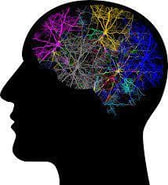 In Fostering a STEAM Mindset across Learning Settings, Laura D. Carsten Conner, Blakely K. Tsurusaki, Carrie Tzou, Perrin Teal Sullivan, Mareca Guthrie, and Stephen M. Pompea describe their seven-year project to connect both out-of-school and in-school practitioners and settings. They initially developed their conceptions of STEAM mindset in out-of-school summer academies for youth. The STEAM kits they developed in these settings were eventually adopted by the local school district. Their report, in Connected Science Learning (October - December, 2019) describes “a tapestry of STEAM connections between in-school and out-of-school settings.” Most impressive in their report is evidence that “self-compassion, rather than self-judgment, can help quiet (a child’s) negative inner voice and promote creative practice”. They describe these key principles:
 In The Trouble with STEAM and Why We Use It Anyway! its diverse authors argue: “STEAM offers significant promise through its focus on multiple ways of knowing and new pathways to equitable learning. On the other hand, it is often deployed in theory, pedagogy, and practice in ambiguous or potentially problematic ways toward varying ends”. The authors analyze varying STEAM definitions and warn that because the approach has so many different interpretations, using the term STEAM “may force a backlash against inter- and transdisciplinary approaches to learning”. They trace the history of the approach and document a variety of research strands that have contributed to understanding STEAM today. The report pays particular attention to the great potential of programs “where STEAM is conceptualized as both pedagogical and mutually instrumental, meaning neither the STEM fields nor arts are privileged over the other, but all fields are equally in play with the potential for transforming educational policy and practice”. This scholarly article can provide significant support to teams that want to innovate across boundaries in ways that break traditional norms. The extensive reference section provides more empirical support for developers. Read more about the work of authors Sam Mejias, Naomi Thompson, Raul Mishael Sedas, Mark Rosin, Elisabeth Soep, Kylie Peppler, Joseph Roche, Jen Wong, Mairéad Hurley, and Philip Bell in Science Education, March, 2021. |
